Anatomy of a Rig – Luz Studio’s Jason Aldean Rock N’ Roll Cowboy
Posted on September 6, 2022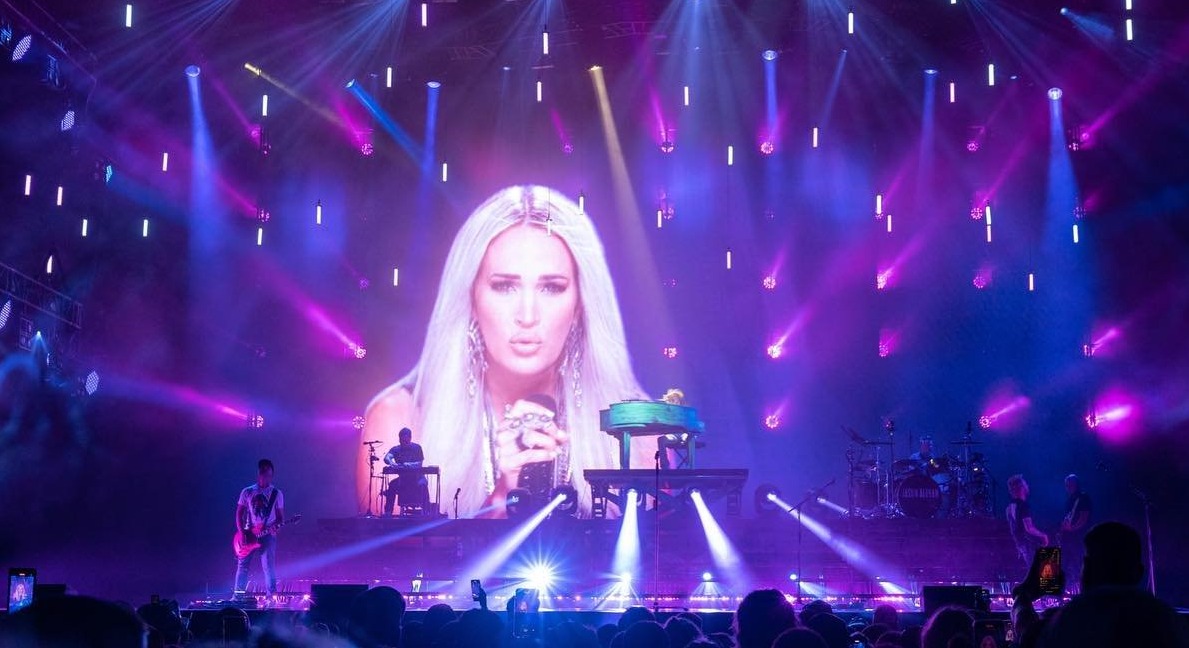
Photo: JP and Sharyn Angers
Multi-Grammy winning superstar Jason Aldean’s 34-city summer and fall tour has been drawing sellout crowds and generating a lot of buzz. Country music fans aren’t the only ones getting excited either. The tour also has people throughout the production industry talking, thanks to a forward-looking set design that draws on artificial intelligence, a massive blow-through video wall, and some adroit use of lighting to create astounding looks that take immersion to a new level.
Created by Montreal-based Luz Studio, the design offers a glimpse into what more touring stages are likely to look like in the future, with its changing 3D background, diverse mix of video images, and seamless blends of light and video as well as reality and virtual reality.
Matthieu Larivée, who managed production design and creative direction for the tour, shared his insights into the anatomy of this innovative rig.
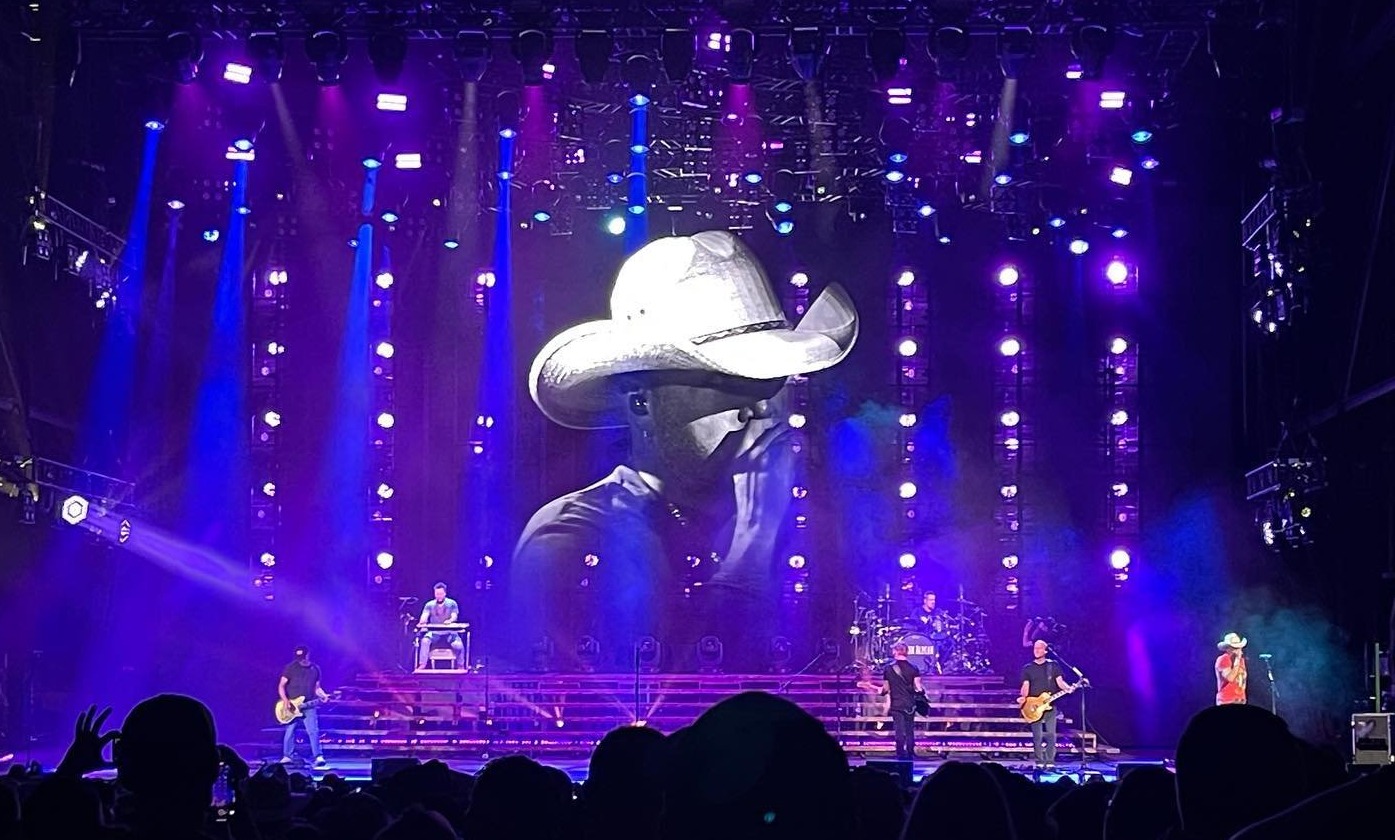
Photo: JP and Sharyn Angers
Your massive, and very impressive video wall with is 3D geometric patterns was a defining design element on this tour. Somehow, it managed to endow the stage with very different looks throughout the show, while still maintaining a consistent mood and character. Can you tell us a bit about how that was accomplished?
“The virtual set extension is a Luz Studio art form. We love to define space by creating 3D pieces that match with the actual stage. Everything becomes very cohesive when we can bring I-MAG within this architecture. In this tour, the set extensions are often not literal with the song. Their designs are driven by the overall vision. So with a 24-song show, the various looks still have a consistency and are not going all over the place.
“This is our third tour with Jason as screen producers. The artistic direction of the show is more and more driven by the content; and for this summer, the idea was to work with a large blow through wall and have some physical lights behind the screen that could be reactive with the video. Therefore, this year, we were also managing the production design and creative direction.”
Why did you elect to go with a blow-through concept for your video wall?
“The purpose of the massive wall is to have large environment that can reach out to the people at the back of the lawn or arenas. However, a massive wall also creates a sizeable ‘hole’ between the floor and the rig. With the blow through design, you have another lighting position behind the wall to integrate it into the overall look. Another key benefit is that weight-wise, it’s easier for touring.”
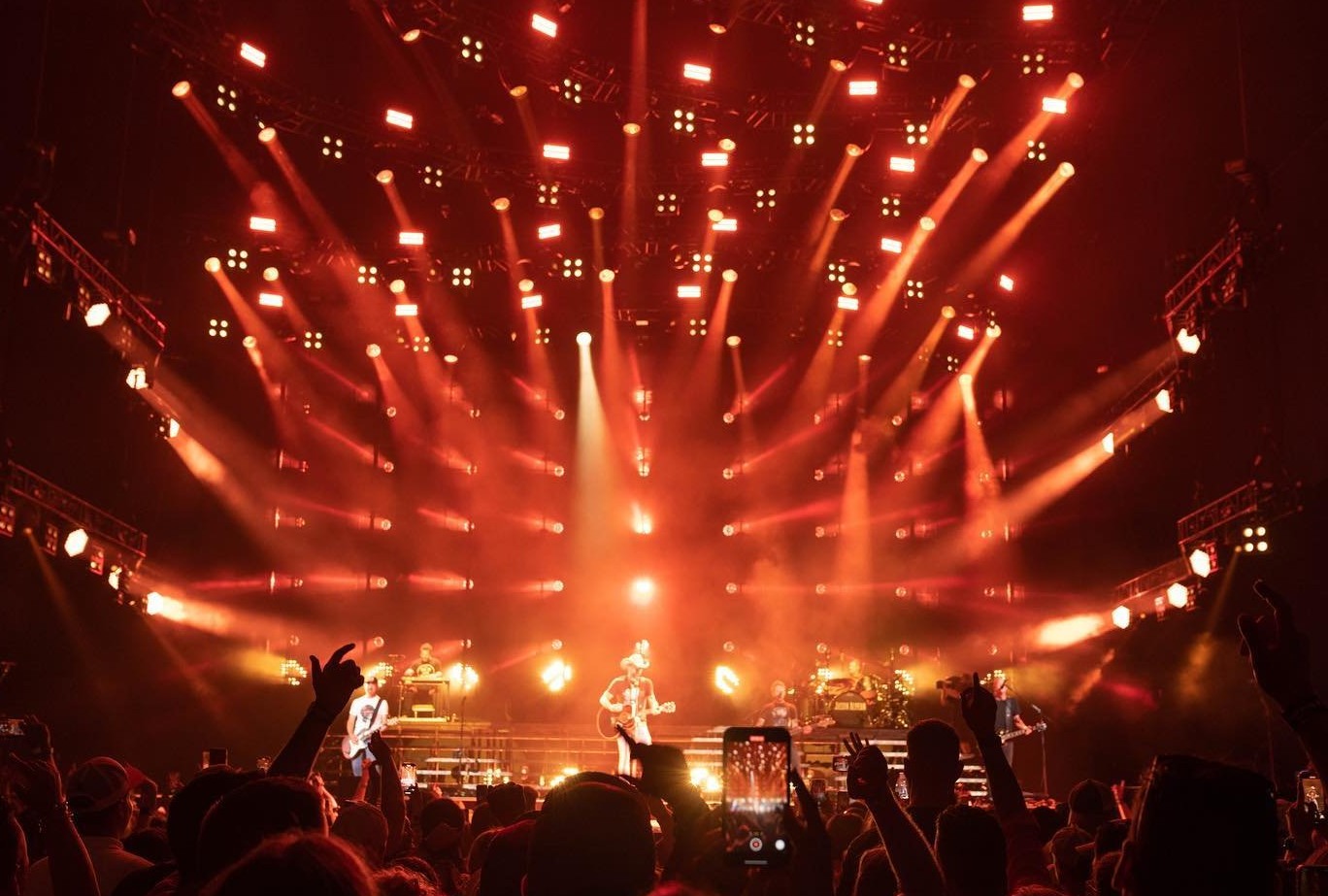
Photo: JP and Sharyn Angers
Can you elaborate, on having the lights shine through the wall contributed to the overall look?
“That was really the start of this design. The virtual lighting of the scenes we create is where the magic kicks in. When the scenes are well lit, they become real, because we can create shades that match with the stage lights. That’s from our lighting design background. I’ve seen a lot of shows with that configuration, but it is usually either lighting cues or videos cues. I wanted to create a real interactive background that could do well with I-MAG or pieces of content.
“As I mentioned, with video we create virtual set extensions and virtual lights; but now, we can add this layer of real lights and incorporate another dimension into the design. That’s why we did a work shop at Bandit Lites, so we could find the best product to go behind the wall. We selected the Pyxis. It was a wash, a beam, and it had endless tilt and pan.
AI was instrumental in helping you achieve these looks. How would you describe its role?
“The purpose of using AI was to be able to film Jason or a band member and kill the background. It’s like what you do when you film someone of a green screen. By doing that , we can have a single Jason on the screen, surrounded by a wall of light, and then we can control those lights via the video server. So basically, when Jason moves, it kills the lights in conflict with his position. As a result, there is no overlap.”
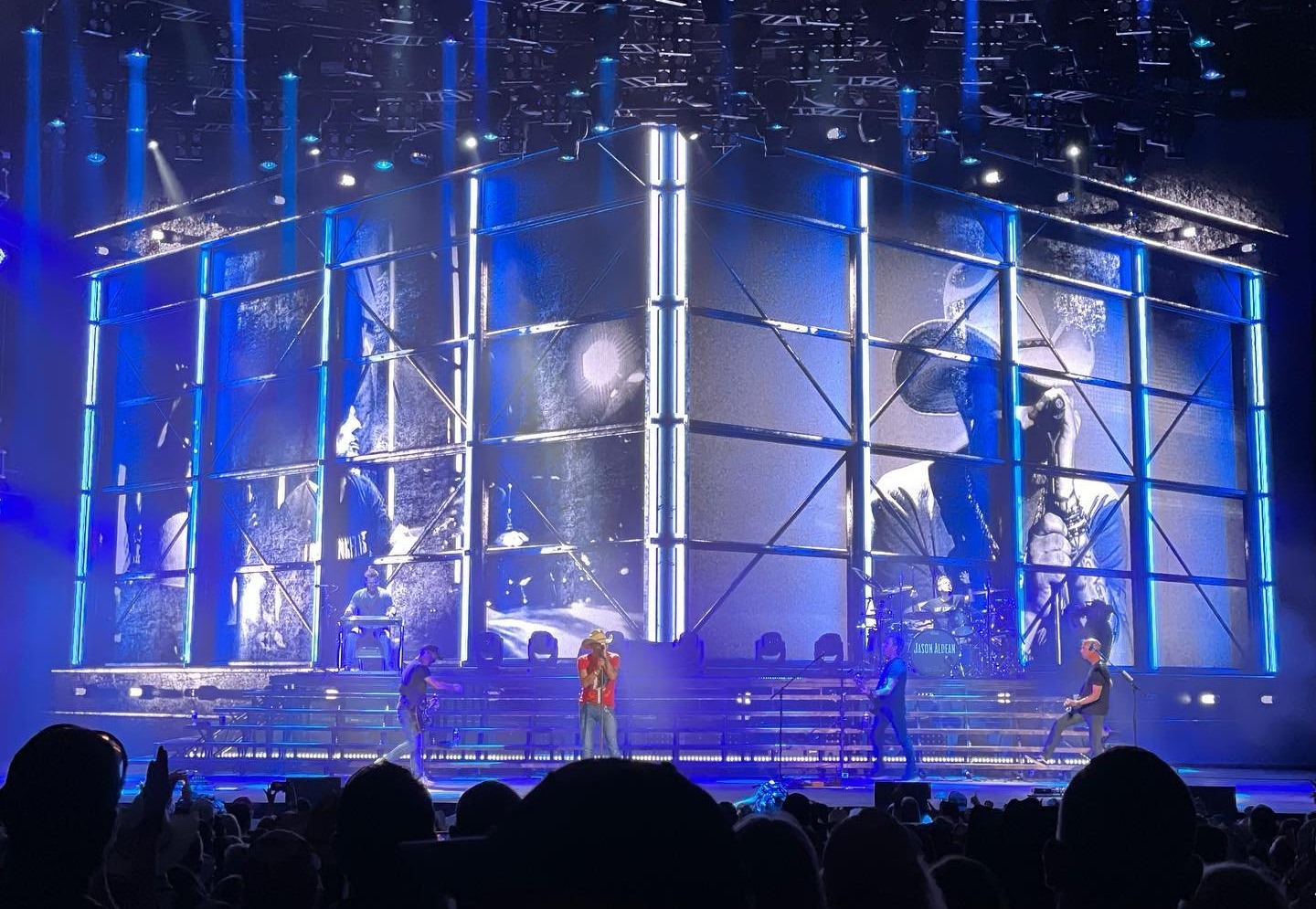
Photo: JP and Sharyn Angers
What were the challenges of working with AI on a major tour?
“Researching and developing the AI was a challenge. We were not sure of the outcome, but it turned well. Really, the flawless control of lighting was one of the nice surprises of this project. I thought that we would have to spend way more time adjusting it, but it really went very smoothly.
“Of course, aside from the technology, people were key to making this forward looking design work in reality. The entire Luz creative crew deserves credit. There were 15 creators and designers working at the studio to make these amazing looks a reality. Also critical was our collaboration with Keith Hoagland our lighting designer. He was a key element in this show’s success, being open minded and willing to start fresh.”
This tour stops at a variety of venues, including arenas and amphitheaters. Is it challenging to adjust the design with its massive blow-through wall for different sites?
“No, we do a good study to create an average and we start from there. For Jason, the stage dimensions were roughly the same — and it’s mostly large crowds. Otherwise, we design with a scalable approach. Exactly like we did on Jack White, were he tours internationally and within arenas, clubs and theaters.”
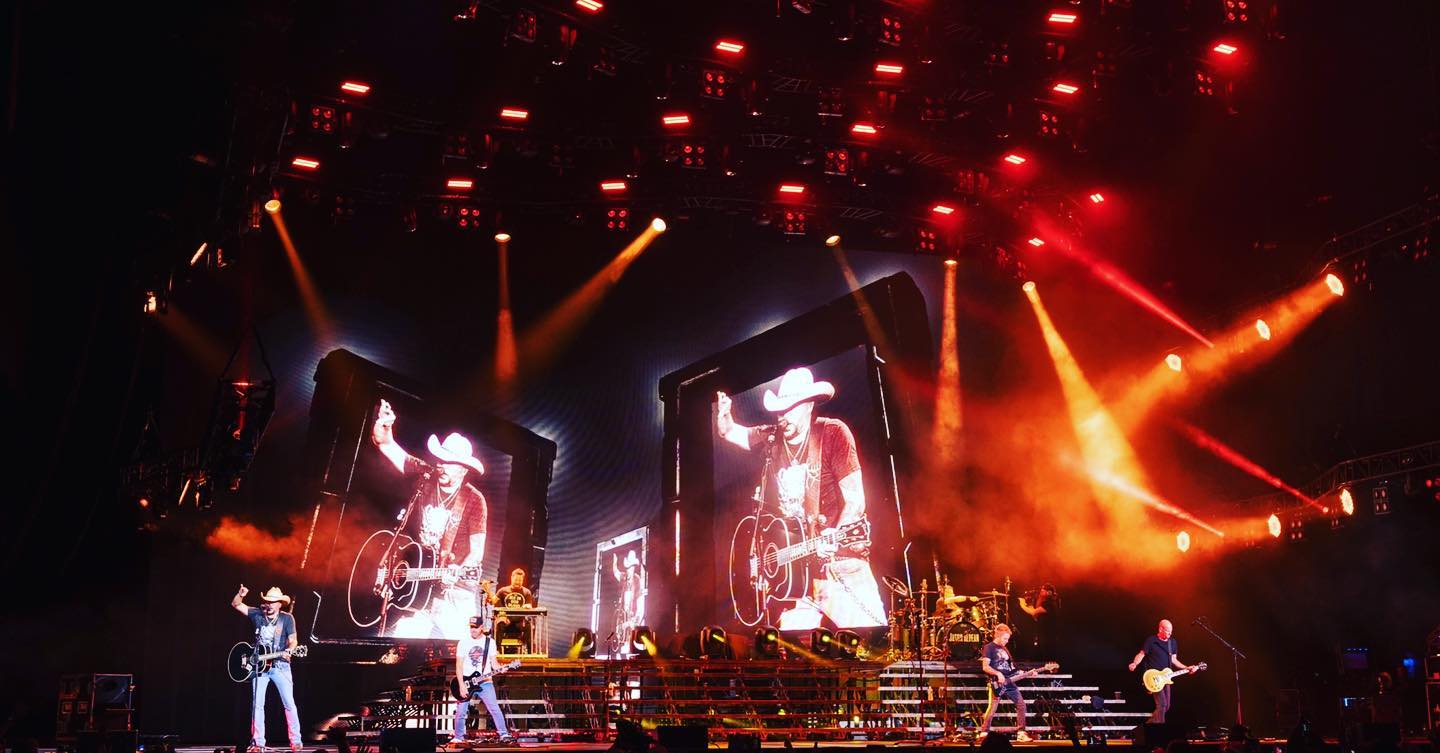
Photo: JP and Sharyn Angers
You’ve mentioned technology. In this project, you made great use of disguise and notch. Can you tell us about that?
The disguise server GX2c is the server that works the best for us with heavy graphic shows. Notch is one of the software that we use a lot to merge the IMAG vfx within our 3D architecture. Every notch block driven is very computer heavy because it’s a live rendering software. We use real-time, shadows, mirror fx, echoes, etcetera.”
So did technology allow you to do things that you might not have been able to do otherwise?
“Well, that’s a catch 22. When you know that the technology exist, it comes to your mind and then you integrate that into your designs. But ultimately, our designs are based on ideas and not gear and technology.”
Will your experience with this tour influence how you design shows in the future?
“Yes it will. We’re already using it now.”
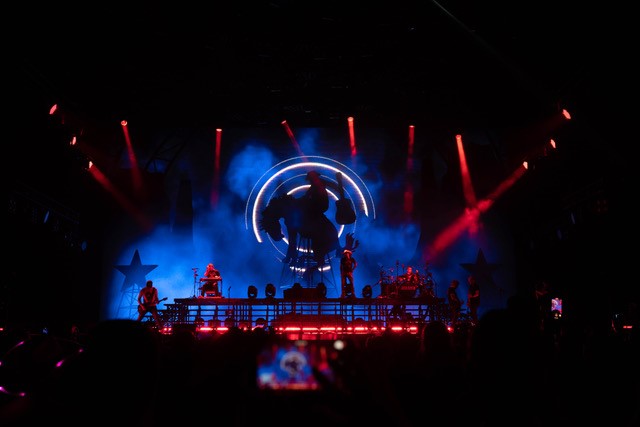
Photo: JP and Sharyn Angers
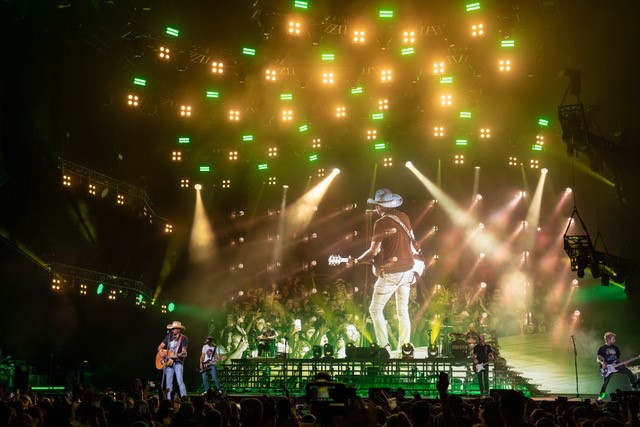
Photo: JP and Sharyn Angers